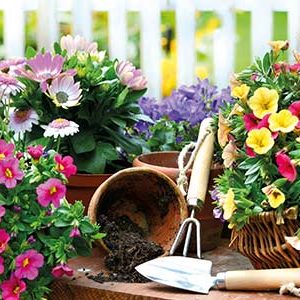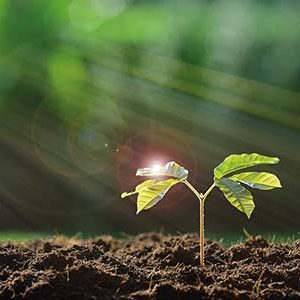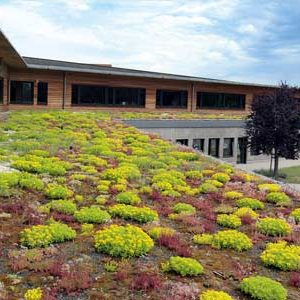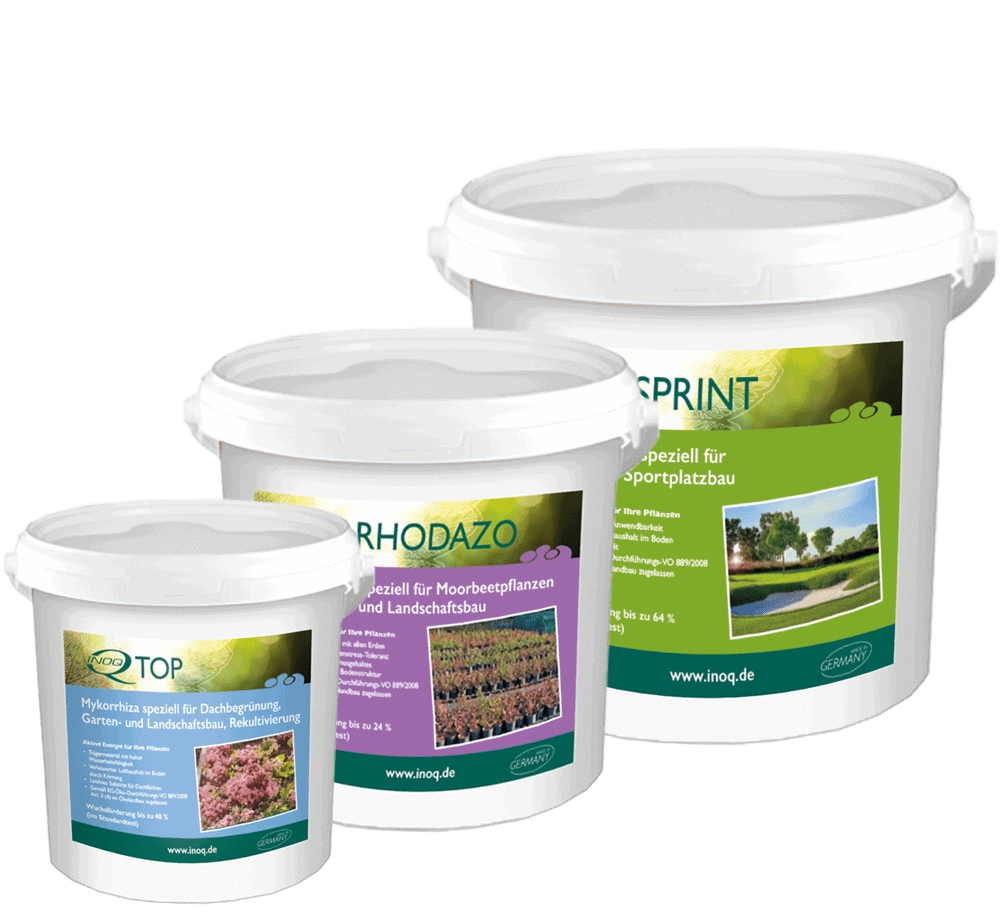Mycorrhiza Fungi Symbiosis
All important facts about symbiosis at a glance
What is mycorrhiza?
What are the mycorrhizal fungi species?

Ectomycorrhiza
Many tree species, especially conifers

Endomycorrhiza
Herbaceous plants, many tree species, especially deciduous trees
Endomycorrhizal fungi penetrate the plant roots of herbaceous plants and many deciduous tree species, where they form the structures necessary for symbiosis. The endomycorrhizal fungi are microscopic and cannot be seen with the naked eye. The hyphal network that surrounds the root in ectomycorrhiza is absent here; instead, some of the fungal hyphae penetrate the cells of the root bark of the plant partner.
Arbuscular mycorrhiza
Arbuscular mycorrhiza is a special form of endomycorrhiza. The mycorrhizal fungi grow through the nearby soil and penetrate the root cells with their filaments. Characteristic of this type of mycorrhiza are the formation of so-called arbuscules – tree-like, delicate, branched hyphae within the root cells.
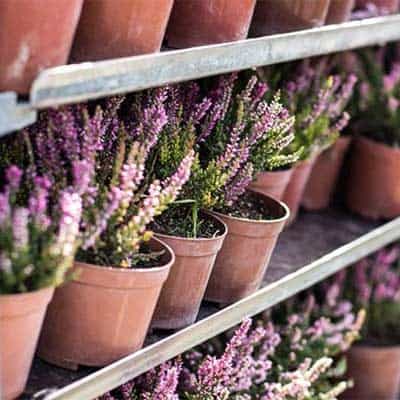
Ericoid mycorrhiza
Plants of the family Ericaceae
Mycorrhiza exists only in plants of the family Ericaeae. Rhododendrons, azaleas, blueberries, calluna and erica are the partners of these fungi.
Advantages and effect of mycorrhiza
The symbiosis strongly stimulates root growth. The plant becomes more flowering and tolerant to diseases, bad weather and soil conditions. Mycorrhizal fungi also improve soil structure.
Through the fungal mycelium, the plant becomes better interconnected with the soil. Nutrient and water uptake of the plant as well as the crumb structure of the soil is improved. On slopes, their hyphal network improves the aggregation of the soil and thus its stability- slopes can be inclined 5° more if the vegetation is well mycorrhizal (e.g. steep slopes and noise barriers).
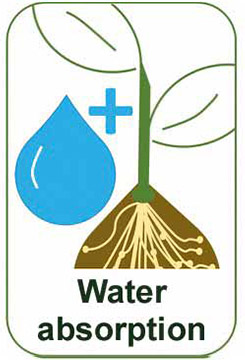
Water absorption
The fungal mycelium makes the plant more interconnected with the soil. The large fungal network expands the root area, facilitating water uptake. Mycorrhization generally increases drought resistance.
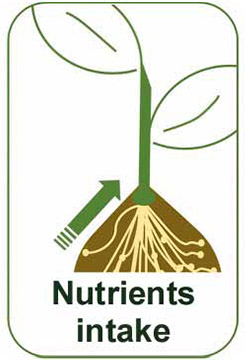
Nutrient uptake
The fungal mycelium extends for several kilometers, depending on the fungal species. Because of this large network in the soil, they absorb significantly more nutrients than a tree. This also means improved fertilizer uptake and allows fertilizer applications to be reduced.
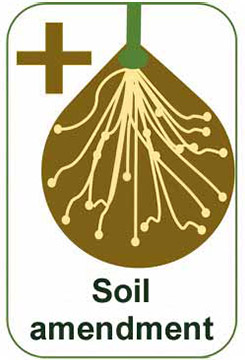
Improved soil structure
Soil quality is clearly improved by mycorrhiza. The soil life is completed by mycorrhiza and the crumb structure of the soil is improved.
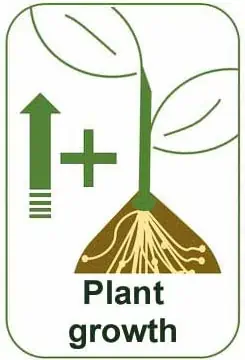
Plant growth
Improved nutrient and water uptake lead to a measurable and lasting increase in plant growth. Mycorrhization increases drought resistance and helps better tolerate adverse weather conditions.
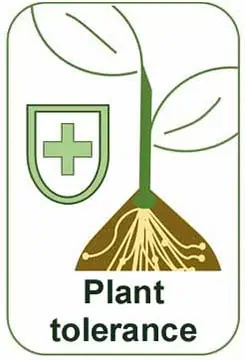
Plant health
Fungal hyphae protect the tree from heavy metals and other pollutants. By storing tannins and antibiotics in the mycelium and tree root, the fungus effectively protects itself and its tree from pathogens and root pests.
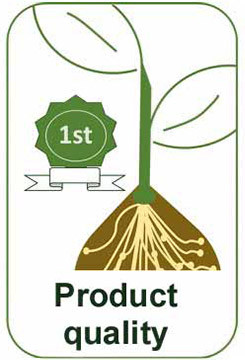
Plant quality
Better growth, higher resistance to bad weather conditions, pollutants, pests and pathogens leads to significantly better plant quality. The plant is overall healthier, stronger and more resistant.

Carbon sequestration
Mycorrhizal mycelium as a carbon store: Mycorrhizal fungi store up to 13 gigatonnes of carbon every year.*
Studie Current Biology
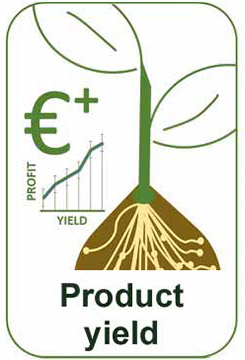
Yield
All of the above benefits result in more timely and increased flowering, leading to higher yields and improved product quality.

Biological diversity
Mycorrhizal fungi as colonisation helpers: When mycorrhizal fungi colonise the soil and find good living conditions, biodiversity increases.
Mycorrhiza products as biostimulants
The effects described in the above section classify mycorrhizal products into the new substance class of biostimulants, which will be regulated for the first time in the new EU Fertilizer Products Regulation of 2019.
Biostimulants indirectly affect the biological and chemical components in the plant and soil through their stimulating effect. In addition to plant protection products and fertilizers, they will form the third pillar of integrated crop production in the future.
The importance of biostimulants is steadily increasing due to the legal restrictions in the crop protection segment as well as in the fertilizer segment.
What are biostimulants?
Biostimulants for plants are substances and/or microorganisms whose function when applied to plants or in the rhizosphere is to stimulate natural processes to improve/promote nutrient uptake, nutrient efficiency, tolerance to abiotic stress, and plant quality regardless of nutrient content.
Biostimulants definition from the European Biostimulants Association, EIBC
What are biostimulants made of?
Common ingredients in biostimulants include:
- Microorganisms
- Plant and seaweed extracts
- Amino acids
- Humic acids
- Mineral salts and some chemicals
How do biostimulants work?
Biostimulants affect the interactions within the plant and between the plant and the surrounding beneficial microorganisms.
They stimulate natural processes to improve nutrient uptake and efficiency. They also help improve the quality of plants and their tolerance to abiotic stresses such as heat, frost or lack of water.
Biostimulants are now an additional tool in the farmer’s toolbox alongside fertilizers and crop protection products. They help to ensure sustainable food production in the face of increasingly extreme climatic conditions and limited agricultural land.
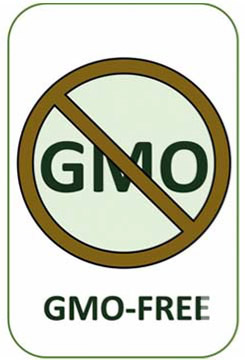
GMO-free
Our mycorrhiza products are a pure natural product and of course free of genetically modified organisms.
In a nutshell, mycorrhiza improves water absorption and nutrient uptake, as well as soil structure. This leads to improved plant growth, better plant health and plant quality. All of these factors result in noticeably better yields, without the use of genetically modified organisms (GMOs).
Application of mycorrhizal inoculants
Our mycorrhiza products are on different carrier materials, such as vermiculite, expanded clay, peat, sand and in various granulations, which are adapted to your areas of application. It is always important during application that the fungi get as close as possible to the roots of the plants: INOQ products are therefore either mixed in with the planting substrate or added directly to the planting hole. Mixed with water, some products can also be used to wet bare-root plants.
Ideally, the product should reach the fine roots, e.g., by drilling holes or tilling the soil. For new lawn seeding, sprinkling and in seedbeds, sprinkling is sufficient because it is often impractical to do otherwise. In vegetable gardens, the product should at least be raked in. For optimal development of symbiosis, INOQ products should be given to the roots of the plants, i.e. directly into the planting hole or by working them into the substrate or soil surface.
When using mycorrhizae together with fertilizers, note that mycorrhizal fungi make nutrients more available to plants, especially phosphate and nitrogen. You can continue to fertilize your plants, but the amount of fertilizer should be reduced. The reduction will save the environment and your wallet, and in the field of agriculture, it is also controlled by the authorities.
Downloads
Fields of application
An overview of the areas of application of our mycorrhiza products can be found in our application areas
Woody plant list
Here you can download the tree list with frequently requested tree species as PDF.
Application instructions
All important information for the optimal development of the symbiosis can be found in our application instructions.
Examples for the application of mycorrhiza
Not every soil fungus is suitable for every plant. We have developed suitable mycorrhiza products for different areas of application.
These mycorrhiza products are specially adapted to your needs and are
available on different carrier materials.
Research and seminars
Mycorrhiza Research
We participate in national and international research projects and associations. With our research results we make a sustainable contribution to a healthy and growing world.
Mycorrhiza Seminars
Visit the INOQ Campus! The free online seminar series regularly offers you exciting information and expert tips for professional users of mycorrhizal fungi and those who want to become one.
For more information about mycorrhizal research, please visit the website of our Institut für Pflanzenkultur GmbH & Co. KG
Buy Mycorrhiza Products
The INOQ team of experts is here to help
Give your plants a boost of strength.
Address
Solkau 2, 29465 Schnega
Germany
Phone
Phone: +49 (0) 58 42-98 16 72
Fax: +49 (0) 58 42-4 93
info@inoq.de
Business hours
Monday-Friday: 8 am to 4 pm

